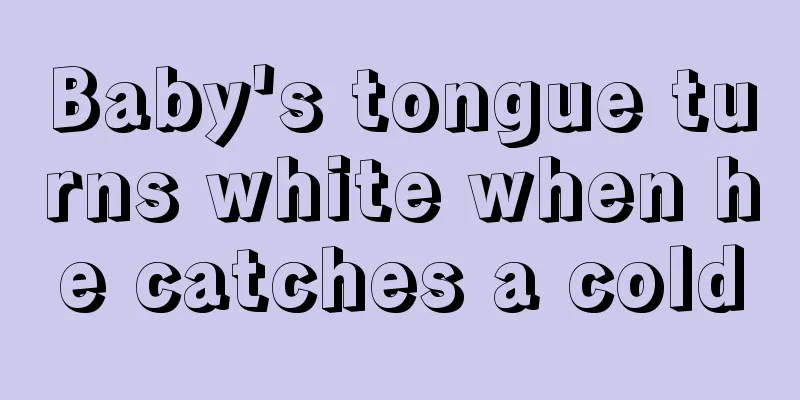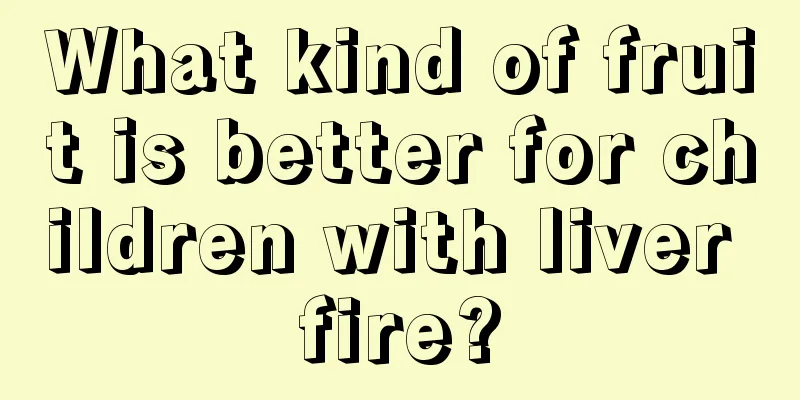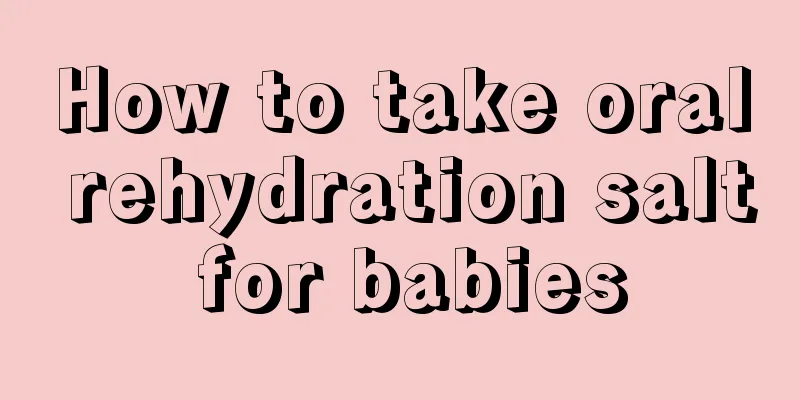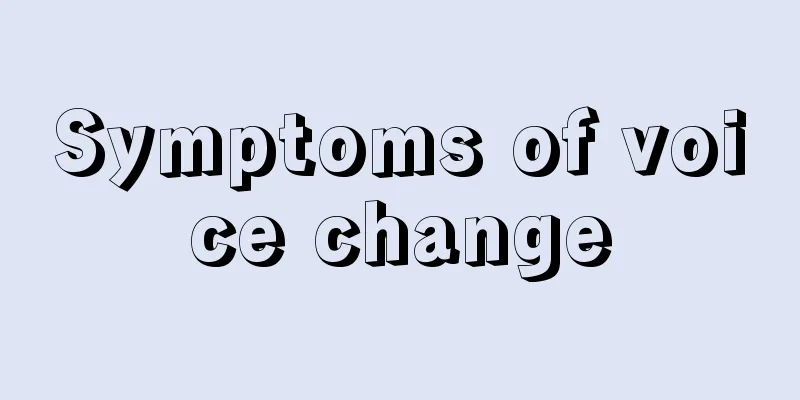Baby's tongue turns white when he catches a cold

|
In our lives, many babies will catch a cold. If there are some white spots on their tongues during a cold, they will feel uncomfortable, and they will often cry and drool more. Because of the cold, the baby is likely to feel a stuffy nose, which will lead to more saliva in the mouth. So what should I do if the baby has a cold and the tongue coating is white? 1. What is the reason for the baby's white tongue coating? 1. If you find white spots on your baby's tongue and lips, there may be worms in the baby's stomach; 2. When there is stomach disease caused by indigestion, food accumulation, cough and phlegm, the tongue coating will become thick and greasy; 3. When a child catches a cold, especially in the early stages of a cold, a thick layer of white fur will appear on the surface of the tongue. As a cold develops, the tongue coating will turn yellow, indicating that the heat is more obvious; 4. When a child is dehydrated due to diarrhea or has a persistent high fever, a dry tongue coating will appear; 5. Some allergic diseases may cause a map-like tongue coating or peeling tongue coating; 6. Black tongue coating that is dry and looks like cracked river bottom often appears in seriously ill children with long-term high fever. 2. What do different colors of tongue coating mean? 1. White tongue coating: generally indicates exterior syndrome and cold syndrome. A thin, white and moist tongue coating is a normal feature of a person's tongue. At the same time, a thin, white coating also indicates that the disease is on the surface of the body and has not penetrated into the interior. The tongue coating is thin, white and overly smooth, which is often seen in symptoms of superficial cold. The tongue coating is thin, white and dry, which indicates superficial heat or infection with dryness. A thick, dry white tongue coating indicates that dampness and turbidity turn into heat and damage body fluids. The tongue is covered with white fur and is not dry to the touch, which is called "powdery white fur" and indicates plague. The tongue coating is white and dry, which is called "rough and cracked tongue coating" and is often seen in febrile diseases. A pale tongue with a white and smooth coating indicates cold syndrome or cold-damp syndrome. The tongue coating is white, smooth and sticky, which is seen in the body with phlegm and dampness or dampness trapped in the spleen. The tongue coating is white, slippery and rotten, which indicates heat accumulation in the stomach. If the tongue coating is white like snowflakes and dry, it is called "snowflake tongue coating", which indicates a cold spleen. If the tongue and mouth are covered with raw cloth, moldy coating, or erosion spots, it is a dangerous sign of stomach qi deficiency and impending extinction of internal organs. 2. Yellow tongue coating: Yellow tongue coating indicates internal heat syndrome. If the tongue coating is thin, yellow and dry, it means that the internal heat is excessive and the body fluids are damaged. The tongue coating is yellow, dry and prickly, and there are cracks on the tongue, which indicates that the internal heat is extremely severe, the body fluids are severely damaged, and the internal organs are extremely hot. The tongue coating is thick and greasy, which is usually caused by phlegm heat, food accumulation or internal damp heat. The tongue coating is yellow, smooth and moist, which is a sign of yang deficiency. 3. Gray tongue coating: mainly indicates internal symptoms. The tongue coating is thin and smooth, which is mostly caused by internal obstruction of cold and dampness, or stagnation of phlegm and fluid. Gray and dry tongue coating indicates fever or yin deficiency and excessive fire. 4. Black tongue coating: Black tongue coating is mostly transformed from yellow tongue coating or gray tongue coating, indicating that the condition is extremely serious. Black and dry tongue coating indicates excessive heat and deficiency of body fluid. The tongue tip has black and dry coating, which indicates excessive heart fire. The tongue coating is black and smooth, indicating extreme yang deficiency and yin cold. |
<<: Baby's eye skin turns pale
Recommend
Will a child grow taller if he has a fever?
Every parent hopes that their child can grow tall...
Small granules on both sides of the child's cheeks
If parents find that their children have small pi...
Children with high platelet count
Platelets are a very important element in our bod...
What disease causes my baby to cough and breathe rapidly?
In recent times, many areas have experienced a si...
Baby high fever convulsions
If a baby has a high fever and is accompanied by ...
What to do if your 2-year-old baby gets angry
When talking about the word "getting angry&q...
Symptoms of intracranial hemorrhage in infants falling out of bed
The phenomenon of babies falling out of bed shoul...
What should I do if my two-month-old baby has diarrhea?
Because the baby is too young, all organs in the ...
What to do if your child has hemorrhoids
In people's minds, hemorrhoids are a common d...
Why do children have precocious puberty?
Generally speaking, children reach sexual maturit...
What fruit is good for babies with cough
The health of babies always attracts great attent...
Can't eat eggs after leprosy vaccine
Babies need to be vaccinated as soon as they are ...
What is the reason for children to urinate frequently? How to judge
Some parents think that their children urinate fr...
At what age can babies eat pineapple?
Babies are different from adults. There are many ...
What causes unstable breathing in newborn babies?
The moment of birth is the first lesson that newb...









